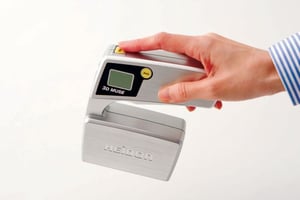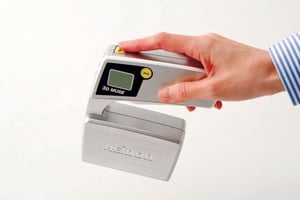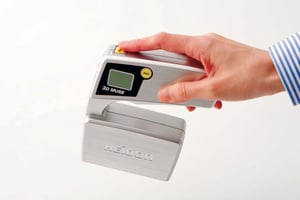 A tribometer may seem like an incredibly clinical tool; you might assume that a device designed to measure friction has little to do with the “real world.” In fact, tribometers aid in the development of many everyday items, ranging from eye drops to cars to stairs and ramps, making our world a safer place with each use.
A tribometer may seem like an incredibly clinical tool; you might assume that a device designed to measure friction has little to do with the “real world.” In fact, tribometers aid in the development of many everyday items, ranging from eye drops to cars to stairs and ramps, making our world a safer place with each use.
In addition to preventing slips and falls, tribometers are used in the development of so many of the products that we use daily. Here are a few ways that tribometers keep us safe:
Following Building Codes and Regulations
One of the major ways that tribometers prevent accidents or injuries is through the development of slip-resistant walkways that meet established safety standards. Building codes, safety regulations, and accessibility requirements all mention adequate slip-resistant walkways, but there’s little information about how this should be achieved. With a tribometer, you can gather information about the level of friction between the walkway and traditional footwear material and even develop solutions to make walkways safer.
For the National Fire Protection Association, the Americans with Disabilities Act, OSHA, and the International Building Code, there are all specific regulations regarding the Coefficient of Friction (COF) of a walkway. Typically, this requirement is a COF of 0.6 for walkways and 0.8 for ramps, with some increased regulations for bathing areas and wet surfaces.
The COF is the easiest, most quantifiable way to measure the amount of friction for a given surface, and this is measurable using a tribometer. Having a proper COF keeps your building safe for people with disabilities or in the event of a fire or other disaster, and keeps your employees free from preventable accidents.
Slip testing is an option on these surfaces; testing the way a human’s foot interacts with the striking surface, but the use of a tribometer is a much simpler, measurable, and consistent way to ensure that your building not only meets code requirements, but is safe as well.
Reducing the Risk of Falls
What else can your tribometer do? Accurately predict the likelihood of a slip and fall through testing and analyzing just how slippery a floor’s surface is. Through careful monitoring of the friction (or lackthereof) of a floor or walkway, it can be easy to prevent many falls from happening, limiting workplace injuries and the challenges that accompany them.
How can this kind of testing help you prevent falls? If a tribometer shows that a certain area to have a low, therefore dangerous Coefficient of Friction, steps can be taken to increase the amount of friction in that area to prevent falls.
For example, if a walkway has a very low COF when wet, absorbent mats or non-slip floor treatments can be added, diamond metal walking surfaces can replace more dangerous smooth metal surfaces, and rain and snow can be better managed (on a loading dock, for example) to avoid excess moisture. In addition, many firms now supply "anti-slip" coatings and coating services.
Without specific COF knowledge from a tribometer, it can be hard to see what safety measures are needed to reduce the occurrence of these easily preventable falls.
Other Uses
How else can a tribometer keep you safe, beyond keeping floors walkable and preventing falls? How about in the automotive industry? Tribometers can check the lubrication levels of transmission fluid, the adhesion of the coating on tires, and various patterns on clutch plates to optimize the engineering and increase safety.
Tribometers can be used to better design ball bearings and machinery of all kinds to keep them running smoothly, keeping their users safe as well. They can be used to rate the efficiency of bike chain lubricants, so each ride is free from the danger of a snapped or disengaged bike chain.
In the medical field, tribometers can be used to measure mechanical wear of machinery, keeping life-saving instruments running when they need to. They can ensure that there is a proper amount of lubrication in medicinal eye drops, and that artificial joints don’t wear out too quickly, keeping users safe and happy. Tribometers were even used to measure the friction forces and sliding factors of cartilage in developing the first artificial joints.
Want to see how a tribometer can keep your workplace safe? Read about our reliable, instantaneous tribometers here. Have more questions or ready to shop? Kett has the right tool for you. Contact us today and let us match you with the perfect tool for your needs, so you can not only work safely, but efficiently too.



